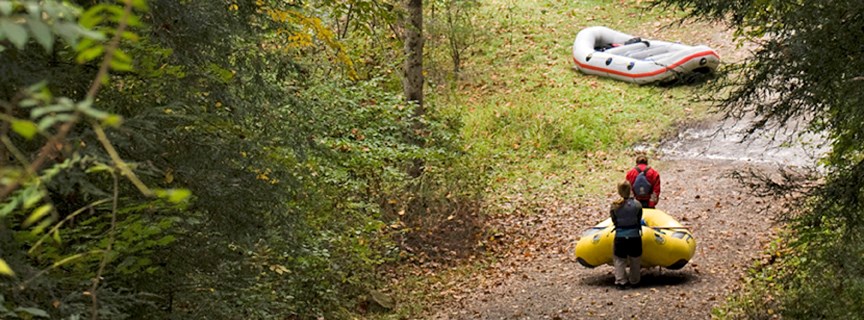Gauley River National Recreation Area protects 25 miles of the Gauley River and six miles of the Meadow River that pass through scenic gorges and valleys containing a wide variety of natural and cultural features. Every September as water is released from Summersville Dam, whitewater enthusiasts from all over the world flock to the Gauley River to experience what is considered by many people to be one of the most thrilling whitewater rafting opportunities in the country. Dropping more than 668 feet through 25 miles of rugged terrain, the Gauley River's complex stretch of whitewater features more than 100 rapids with a steep gradient, technical runs, an incredible volume of water and huge waves. Its vigorous rapids, scenic quality and inaccessibility combine to make Gauley River one of the premier whitewater runs in the world.
Like the New and Bluestone Rivers, the Gauley has cut a gorge that supports diverse and abundant wildlife. Extremes in topography, elevation, and microclimate have resulted in a great diversity of plant life. The Gauley River flows through the gorge for approximately 25 miles with a stream gradient of 28 feet per mile. Within the gorge, the river is characterized by alternating pools and rapids with torrential water, boulders and exposed bedrock. Forests of oak, beech, yellow poplar, hemlock and dogwood support a wide variety of wildlife species including many rare and threatened species such as the Allegheny woodrat, cerulean warbler, eastern hellbender, and finescale saddled darter. High-energy rivers like the Gauley are an ecological driving force for some plant communities. Gauley River is an excellent example of a high energy system which supports rare plant species and their communities. Rare plants here include Virginia Spiraea, Appalachian Blue Violet, and Balsam Squaw-weed.
Gauley River National Recreation Area, New River Gorge National Park and Preserve, and Bluestone National Scenic River combine to make this part of southern West Virginia an oasis for recreation, inspiration, and investigation. These three parks are just a small part of a much bigger system of over 400 special places across the nation set aside to be preserved not only for us, but for the benefit of future generations.

